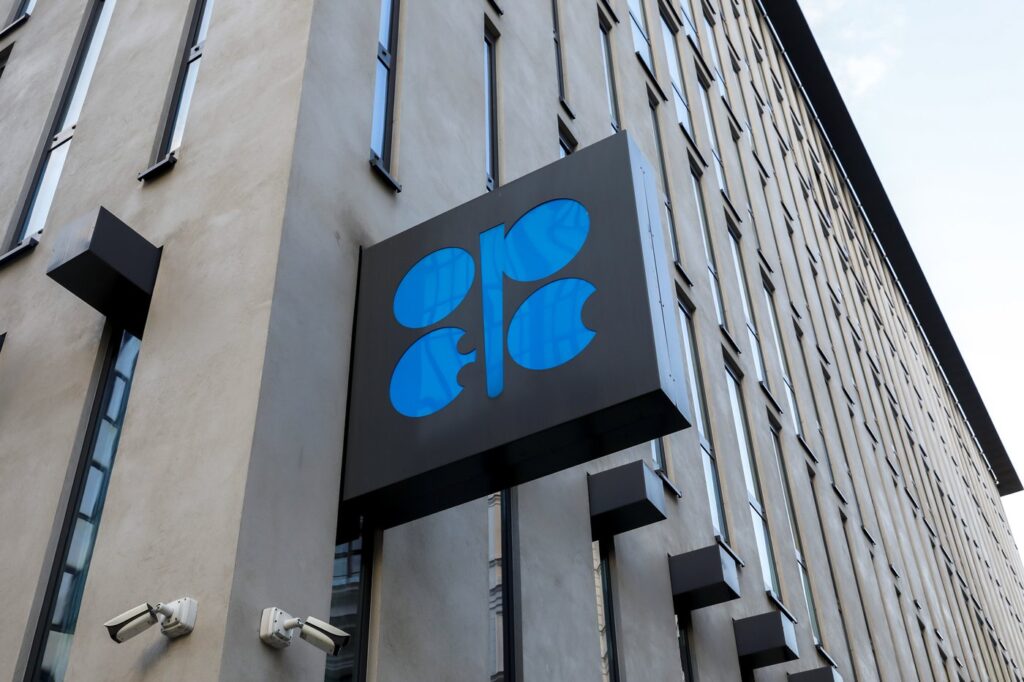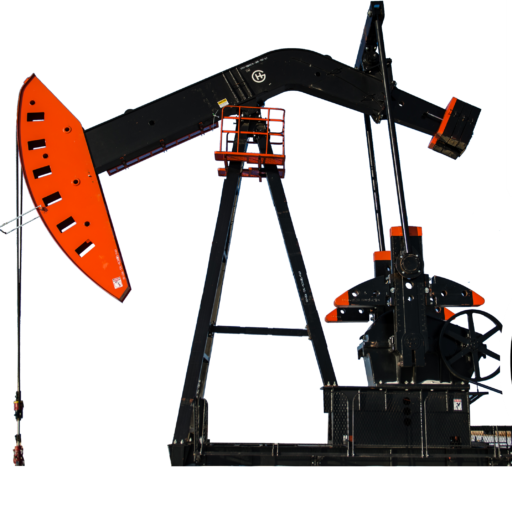Associate Press copy is provided via The Canadian Press

FILE – The logo of the Organization of the Petroleoum Exporting Countries (OPEC) is seen outside of OPEC’s headquarters in Vienna, Austria, Thursday, March 3, 2022. Oil prices are high, and drivers are paying more at the pump. But the OPEC oil cartel and allied producing nations may not be much help at their meeting Thursday, June 30. The OPEC+ alliance, which includes Russia. is having trouble meeting its announced production quotas. (AP Photo/Lisa Leutner, file)
FRANKFURT, Germany (AP) — Major oil-producing countries led by Saudi Arabia and Russia have decided to slash the amount of oil they deliver to the global economy.
And the law of supply and demand suggests that can only mean one thing: higher prices are on the way for crude, and for the diesel fuel, gasoline and heating oil that are produced from oil.
The decision by the OPEC+ alliance to cut 2 million barrels a day starting next month comes as the Western allies are trying to cap the oil money flowing into Moscow’s war chest after it invaded Ukraine.
Here is what to know about the OPEC+ decision and what it could mean for the economy and the oil price cap:
WHY IS OPEC+ CUTTING PRODUCTION?
Saudi Arabia’s Energy Minister Abdulaziz bin Salman says that the alliance is being proactive in adjusting supply ahead of a possible downturn in demand because a slowing global economy needs less fuel for travel and industry.
“We are going through a period of diverse uncertainties which could come our way, it’s a brewing cloud,” he said, and OPEC+ sought to remain “ahead of the curve.” He described the group’s role as “a moderating force, to bring about stability.”
Oil prices have fallen after a summer of highs. International benchmark Brent crude is down 24% from mid-June, when it traded at over $123 per barrel. Now it’s at $93.50.
One big reason for the slide is fears that large parts of the global economy are slipping into recession as high energy prices — for oil, natural gas and electricity — drive inflation and rob consumers of spending power.
Another reason: The summer highs came about because of fears that much of Russia’s oil production would be lost to the market over the war in Ukraine.
As Western traders shunned Russian oil even without sanctions, customers in India and China bought those barrels at a steep discount, so the hit to supply wasn’t as bad as expected.
Oil producers are wary of a sudden collapse in prices if the global economy goes downhill faster than expected. That’s what happened during the COVID-19 pandemic in 2020 and during the global financial crisis in 2008-2009.
HOW IS THE WEST TARGETING RUSSIAN OIL?
The U.S. and Britain imposed bans that were mostly symbolic because neither country imported much Russia oil. The White House held off pressing the European Union for an import ban because EU countries got a quarter of their oil from Russia.
In the end, the 27-nation bloc decided to cut off Russian oil that comes by ship on Dec. 5, while keeping a small amount of pipeline supplies that some Eastern European countries rely on.
Beyond that, the U.S. and other Group of Seven major democracies are working out the details on a price cap on Russian oil. It would target insurers and other service providers that facilitate oil shipments from Russia to other countries. The EU approved a measure along those lines this week.
Many of those providers are based in Europe and would be barred from dealing with Russian oil if the price is above the cap.
HOW WILL OIL CUTS, PRICE CAPS AND EMBARGOES CLASH?
The idea behind the price cap is to keep Russian oil flowing to the global market, just at lower prices. Russia, however, has threatened to simply stop deliveries to a country or companies that observe the cap. That could take more Russian oil off the market and push prices higher.
That could push costs at the pump higher, too.
U.S. gasoline prices that soared to record highs of $5.02 a gallon in mid-June had been falling recently, but they have been on the rise again, posing political problems for President Joe Biden a month before midterm elections.
Biden, facing inflation at near 40-year highs, had touted the falling pump prices. Over the past week, the national average price for a gallon rose 9 cents, to $3.87. That’s 65 cents more than Americans were paying a year ago.
“It’s a disappointment, and we’re looking at what alternatives we may have,” he told reporters about the OPEC+ decision.
WILL THE OPEC PRODUCTION CUT MAKE INFLATION WORSE?
Likely yes. Brent crude should reach $100 per barrel by December, says Jorge Leon, senior vice president at Rystad Energy. That is up from an earlier prediction of $89.
Part of the 2 million-barrel-per-day cut is only on paper as some OPEC+ countries aren’t able to produce their quota. So the group can deliver only about 1.2 million barrels a day in actual cuts.
That’s still going to have a “significant” effect on prices, Leon said.
“Higher oil prices will inevitably add to the inflation headache that global central banks are fighting, and higher oil prices will factor into the calculus of further increasing interest rates to cool down the economy,” he wrote in a note.
That would exacerbate an energy crisis in Europe largely tied to Russian cutbacks of natural gas supplies used for heating, electricity and in factories and would send gasoline prices up worldwide. As that fuels inflation, people have less money to spend on other things like food and rent.
Other factors also could affect oil prices, including the depth of any possible recession in the U.S. or Europe and the duration of China’s COVID-19 restrictions, which have sapped demand for fuel.
WHAT WILL THIS MEAN FOR RUSSIA?
Analysts say that Russia, the biggest producer among the non-OPEC members in the alliance, would benefit from higher oil prices ahead of a price cap. If Russia has to sell oil at a discount, at least the reduction starts at a higher price level.
High oil prices earlier this year offset much of Russia’s sales lost from Western buyers avoiding its supply. The country also has managed to reroute some two-thirds of its typical Western sales to customers in places like India.
But then Moscow saw its take from oil slip from $21 billion in June to $19 billion in July to $17.7 billion in August as prices and sales volumes fell, according to the International Energy Agency. A third of Russia’s state budget comes from oil and gas revenue, so the price caps would further erode a key source of revenue.
Meanwhile, the rest of Russia’s economy is shrinking due to sanctions and the withdrawal of foreign businesses and investors.
David Mchugh, The Associated Press
- 0098 SASPO-2874_Self Serve Campaign_New Connects_Youtube_v30098 SASPO-2874_Self Serve Campaign_New Connects_Youtube_v3
- 0100 Turnbull Project Manager0100 Turnbull Project Manager
- 0099 Mryglod Steel 1080p0099 Mryglod Steel 1080p
- 0097 Eagle Sky Ventures LTD0097 Eagle Sky Ventures LTD
- 0095 Fast Trucking nearly 70 years good at it0095 Fast Trucking nearly 70 years good at it
- 0053 Kingston Midstream Westspur Alameda Click Before You Dig0053 Kingston Midstream Westspur Alameda Click Before You Dig
- 0092 Turnbull projects big and small0092 Turnbull projects big and small
- 0046 City of Estevan This is Estevan Teaser0046 City of Estevan This is Estevan Teaser
- 0087 Lori Carr Coal Expansion0087 Lori Carr Coal Expansion
- 0077 Caprice Resources Stand Up For Free Speech0077 Caprice Resources Stand Up For Free Speech
- 0076 Latus only0076 Latus only
- 0061 SIMSA 2024 For Sask Buy Sask0061 SIMSA 2024 For Sask Buy Sask
- 0055 Smart Power Be Smart with your Power office0055 Smart Power Be Smart with your Power office
- 0051 JML Hiring Pumpjack assembly0051 JML Hiring Pumpjack assembly
- 0049 Scotsburn Dental soft guitar0049 Scotsburn Dental soft guitar
- 0041 DEEP Since 2018 now we are going to build0041 DEEP Since 2018 now we are going to build
- 0032 IWS Summer hiring rock trailer music
- 0022 Grimes winter hiring
- 0021 OSY Rentals S8 Promo
- 0018 IWS Hiring Royal Summer
- 0013 Panther Drilling PO ad 03 top drive rigs
- 0006 JK Junior
- 0002 gilliss casing services0002 gilliss casing services
- 9002 Pipeline Online 30 sec EBEX9002 Pipeline Online 30 sec EBEX
- 9001
